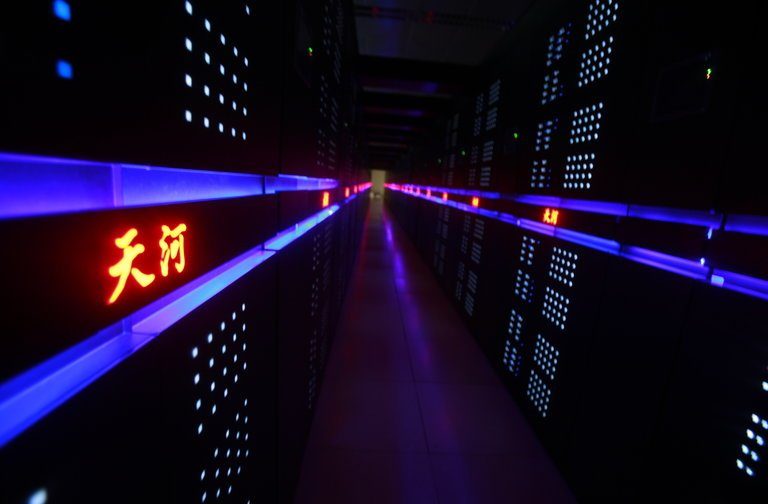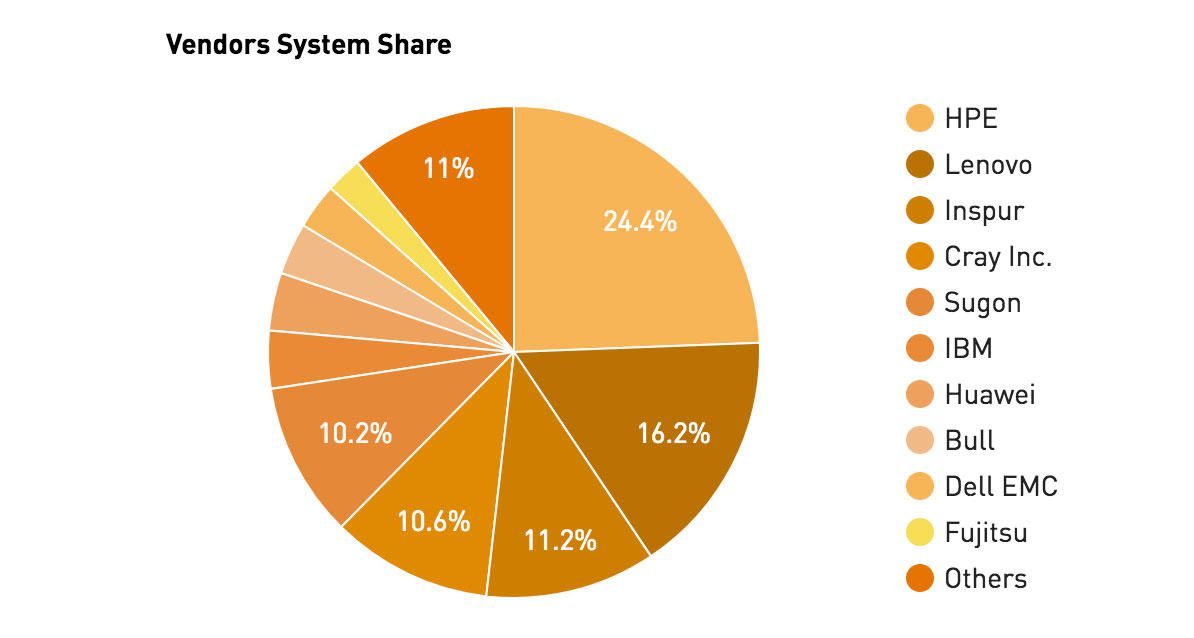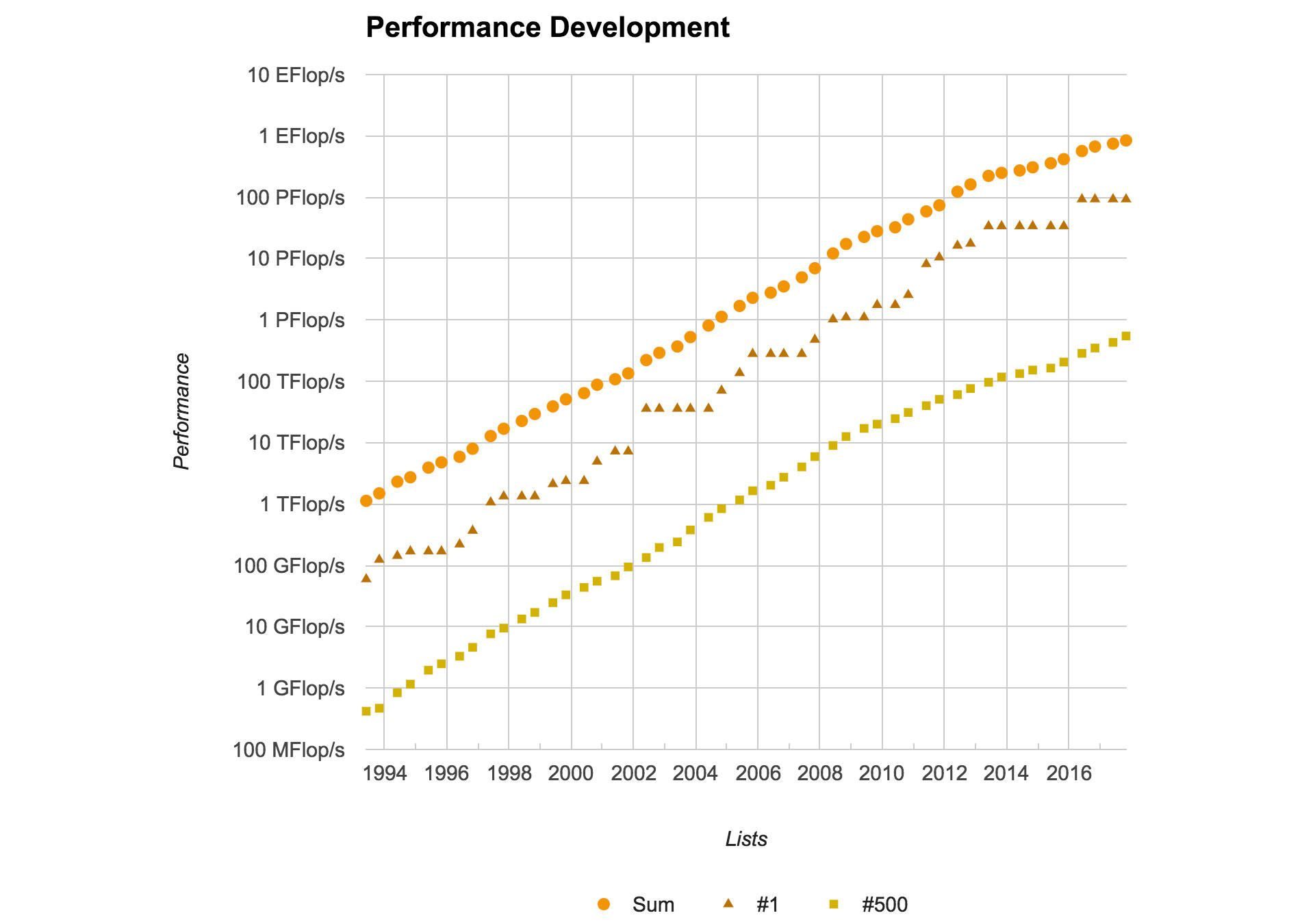
For the first time, China has the most systems on the Top500 list, 202, up from 159 six months ago. The US dropped from 169 to 144. And in terms of the total performance of those machines, China also overtook the US, the Top500 supercomputer list organizers said.
The news underscores the relentless ascent of China's supercomputing trajectory in recent years. It also marks a notable shift in the international balance of high-end computing power that's closely tied to industrial, academic and military abilities.
The steady increase in computing power on the Top500 list of supercomputers tailed off in recent years. This chart shows the performance of all 500 machines as the orange points, the single fastest as the brown triangles and the 500th on the list as the yellow squares. Today's slowest machine has the performance of the fastest one in 2008.
Supercomputers, mammoth machines that can occupy entire buildings and use thousands of processors, are useful for tasks like simulating nuclear weapons explosions, forecasting weather, designing aircraft and investigating the cosmos by reconstructing billions of year of the universe's history.
At the SC 17 supercomputing show starting Monday in Denver, NASA will show off supercomputing work into precise simulations of climate change on Earth, the aerodynamics of drones that fly using multiple propellers and detailed forecasts of shock-wave damage from meteors.
HP Enterprise is the top maker of supercomputers in late 2017, as measured by the number of machines on the Top500 list of the world's most powerful systems.

The Top500 list, released twice a year in conjunction with the annual SC conference, is compiled by researchers at Lawrence Berkeley National Laboratory, the University of Tennessee and cloud-computing company Prometeus. It ranks supercomputers by how fast they can perform mathematical calculations on an imperfect but still useful speed test called Linpack. Results are measured in floating-point operations per second, or FLOPS.
The top two machines both are in China. Sunway TaihuLight, at China's National Supercomputing Center in Wuxi, was clocked at 93.01 petaflops, or 93 quadrillion calculations per second. The No. 2 machine, Tianhe-2 at the National Supercomputer Center in Guangzho, scored 33.86 petaflops. They've held the top two spots for two years.
The United States might reclaim the top spot on the Top500 list, though. An IBM-built machine called Summit at Oak Ridge National Laboratory is designed to reach about 200 petaflops, double the performance of Sunway TaihuLight. It's in a 10,000-square-foot facility that's got a 20-megawatt power system for running the machine and keeping it cool. That's enough electricity to power about 16,300 houses.
For years, supercomputing speeds increased steadily with each new release of the Top500 list. In about 2012, though, progress improvements slowed down a notch, limited by diminishing processor speed improvements.
The Top500 organizers also have begun ranking supercomputers by a newer speed test designed to better reflect the range of computing tasks the machines handle, the High-Performance Conjugate Gradient (HPCG) benchmark. By this measure, Fujitsu's K Computer at the RIKEN Advanced Institute for Computational Science in Japan is the top performer.
Comment: This is a rather telling state of affairs. The United States, and most western powers, are failing in nearly every respect and leaders not tied to their corruption are looking to China and Russia as the countries of the future:
- Largest radio telescope being built in China
- Qatar turns to Russia for defense systems and technologies
- China reveals model of a 7,680mph hypersonic strike aircraft on state TV
- Russia develops electromagnetic weapons which could 'neutralize entire armies'
- Iron Man made in China
- Russian military technology: More bang for the buck
- First head transplant to be carried out in China in 2017: Will cost $11mn
- Russia's record wheat harvest sees it replace US as agricultural superpower
- Sponge City Initiative project: China is building 30 'sponge cities' that aim to soak up floodwater and prevent disaster




Making Open source software the more convenient of the OS Packs...
Link [Link]
And china dominates It too, It also shows that China now claims 202 systems within the TOP500, while the United States claims 143 systems.
Link [Link]